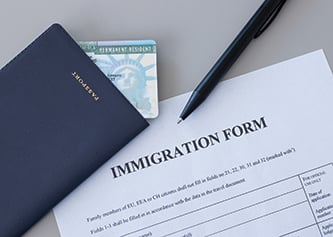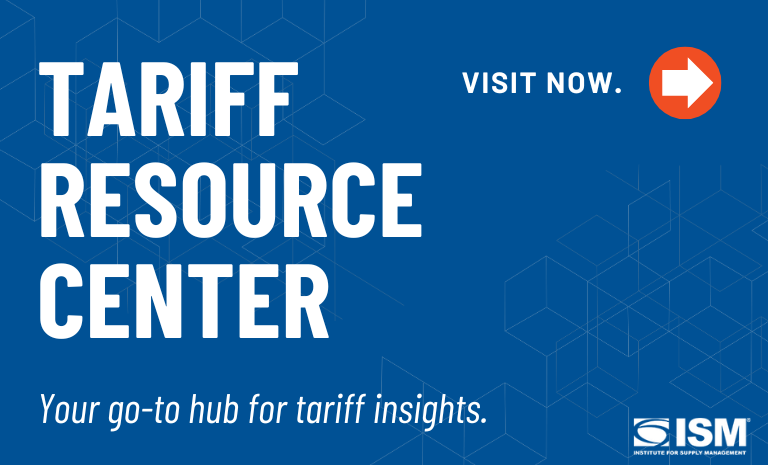The ‘$1 Million Question’ on Immigration
Tightening policies and increased visa rejections would impact foreign-born workers, as well as companies that employ them — and, potentially, the quantity and quality of the U.S. skilled labor pool.

In two decades since arriving from India to attend college, Vinay Pandey, MBA, MS, has compiled a résumé that, by any standard, exemplifies the American dream: two master’s degrees and exemplary work at one of the world’s most iconic technology brands.
However, for the director of software procurement at Dell Technologies, satisfaction in a job well done can be overshadowed by stress over the complicated and seemingly never-ending process of remaining in the country legally.
Pandey is on an H-1B or, as it’s often labeled, the “specialty occupation” visa. He has applied for an EB1-A visa — for foreign nationals “of extraordinary abilities,” according to U.S. Citizenship and Immigration Services (USCIS) — as he and Dell continue to navigate a glacial-pace green card backlog for Indian citizens.
“During (the visa application process), I’m reminded that, in a way, I don’t belong here,” says Pandey, who is based at Dell’s facility in Austin, Texas. “I’ve invested 19 years in this country. I’m a legal immigrant who pays my taxes and does everything else right. I’m not saying I’m the best out there, but somebody like me, who has demonstrated academic excellence as well as professional excellence and expertise, should be accounted for.”
For workers like Pandey, as well as their companies and supply chain organizations, the anxiety has been elevated significantly since January, with the Trump administration tightening immigration policies, leading to foreign nationals facing more stringent work visa processing and even threats of deportation.
Amid increased enforcement, including audits and inspections by such federal agencies as Immigration and Customs Enforcement (ICE) and the Department of Homeland Security, some companies are reevaluating their levels of reliance on foreign workers, legal experts told Inside Supply Management®.
“The visa system has always given employers a bit of predictability when it comes to hiring immigrant workers,” says H. Alan Rothenbuecher, J.D., partner and immigration practice leader at Benesch, Friedlander, Coplan & Aronoff LLP, a national law firm based in Cleveland. “But lately, with all the different actions and statements coming out, a lot of our client companies are feeling pretty unsettled about whether they can still count on it.”
He adds, “Now, employers are having to rethink their plans — whether that means scaling back, finding other ways to get projects done, or in some cases, just cutting their losses and moving on.”
As affected companies walk the tightrope of compliance, protecting foreign national employees and ensuring the head count necessary to do business — and, potentially, a smaller pool of skilled workers over the long term — Pandey’s anxiety extends far beyond his workplace.
He is married to an Indian citizen and is a father of two U.S.-born children, and the clock is ticking: His H-1B visa expires in December.
‘Critical Infrastructure’ and Confusion
Immigration enforcement has been typically associated with the agriculture and construction industries. In the early days of the Trump administration, raids were conducted at such targets as construction sites and markets; in March, ICE agents made 11 arrests at the Port of Lake Charles, Louisiana.
However, federal officials have done nothing to temper their promises of large-scale “I-9 audits,” in which authorities review companies’ federal I-9 employee eligibility verification forms. Technology companies are hardly immune, Rothenbuecher says, as officials cite protection of critical infrastructure and products vital to national security interests, like semiconductors.
At one of his firm’s client companies, an ICE agent recently entered and served notice of an I-9 inspection. “It is not generally considered a high-risk company, but it manages critical infrastructure,” he says.
Many critical infrastructure manufacturers, Rothenbuecher notes, are already subject to strict employment restrictions under the International Traffic in Arms Regulations (ITAR), which apply to production, export or transfer of defense-related products, services or technical data. ITAR also impact entities — including defense contractors, aerospace companies and software developers — that work with the U.S. military or government.
If a government crackdown happens, what are the chances a supplier can backfill people? So, that’s one more headache. It’s another potential disruption, which certainly isn’t new, but it would be for a reason supply managers haven’t been used to dealing with in a long time, if ever.”
— NASEEM MALIK, CPSM
MRA Global Sourcing
Though only U.S. citizens and permanent residents are permitted to work on ITAR projects, such companies have still been subject to audits, Rothenbuecher says: “Targeting those firms with audits feels a bit off, since they’re already under a lot of scrutiny anyway. But it does send a clear message that no company is off-limits.”
While manufacturing and technology giants can and do employ foreign nationals, larger companies generally have the resources to pay more for American workers or utilize alternate production or sourcing. Tightening federal immigration policies might have a greater impact on small and midsize businesses, says Naseem Malik, CPSM, founder and managing partner at MRA Global Sourcing, a Dallas-based procurement and operations talent recruiting firm.
“Companies with tighter margins will be disproportionately hit,” Malik says. He cites a Midwest manufacturer that has temporarily stopped hiring workers on H-1B visas, which are generally valid for up to six years.
Under federal law, new H-1B visas are limited to 85,000 per fiscal year. Rejection rates spiked during Trump’s first term, and this time, requests for evidence (RFE) — a formal notice issued by USCIS when additional documentation or clarification is needed to evaluate a petition — have been on the rise. The result, Malik says, is uncertainty that has companies like the Midwest manufacturer hitting pause.
“The company has put hiring workers on H-1B visas on hiatus at least until the second half of the year and maybe later, until there’s more clarity and understanding about the policy changes that will be implemented,” Malik says. “Right now, the company doesn’t want to take the risk of hiring somebody and then finding out it can’t keep that person.”
Another result of the uncertainty: Many technology companies are advising employee visa holders to not leave the country, in case they are not allowed to return. Pandey has eschewed international travel in recent months, including a visit to his parents in India. They are expected to visit Pandey and his family in Texas this summer.
Showing (and Proving) ‘Extraordinary Ability’
H-1B visas, according to USCIS, enable U.S. employers to hire workers for specialty occupations in which the pool of qualified Americans is limited. Pandey’s qualifications are exemplified by his tenure at Dell, where he is compensated generously for leading an 11-person team that procures software for a client solutions group that has generated most of the company’s revenue of more than US$88 billion.
Pandey was among the leaders of Project Fort Zero, a joint cybersecurity initiative between Dell and the U.S. Department of Defense (DoD) that involved 50 technology partners. In April, Dell announced that the project (which was not subject to ITAR oversight) had completed the security controls necessary to achieve DoD validation.
While Dell facilitated his H-1B visa process, Pandey is applying for the EB1-A visa on his own. Still, the company has “provided all of the necessary resources and documentation to back up my claims of extraordinary ability,” Pandey says.
“Also, Dell’s legal team and external immigration experts have been invaluable. They’ve guided me through the complexities of the visa application, ensuring all necessary documentary evidence is prepared. Their support has made a big difference in navigating this challenging process.”
Pandey is among several Dell foreign nationals working at the Austin facility. Another is his wife, Neha, a data scientist on a dependent visa that enables her to accompany her husband in the U.S. The couple bought a house not long after starting their family and have immersed themselves in many parts of American culture, including as fans of sports at the University of Texas, where Pandey earned his MBA.
He is hopeful that EB1-A acceptance will shorten his green card process by at least two years. Due to annual caps on employment-based visas and an overwhelming number of applications from their country, Indian citizens can wait decades for a green card, which grants permanent U.S. resident status. Pandey first applied for a green card in 2014.
If his application is denied, Pandey says, “I’m committed to continuing my work in software procurement and would consider alternative countries for work. Given a choice, I would like to stay in the U.S., which has been at the forefront of software and technology, and especially because I have two American children.”
(Editor’s note: Pandey is an Institute for Supply Management® member who has authored multiple guest articles for Inside Supply Management®. As part of his EB1-A visa application process, ISM® provided a letter of recommendation.)
If an H-1B or similar visa is denied, employees and companies have few alternatives, and “they aren’t great,” Rothenbuecher says.
An L-1 visa allows companies with foreign subsidiaries or affiliates to transfer employees to the U.S. as managers or specialized knowledge workers. However, this option is not available to all businesses, particularly small and mid-sized ones.
H-2B visas are a short-term solution for businesses with seasonal or peak-demand needs. However, this visa is also subject to caps and high demand.
How Companies Can Mitigate Risk
In recent months, law firms specializing in immigration and labor litigation have been inundated, if not overwhelmed, with inquiries from companies who do not want to be blindsided by audits and inspections.
Among Rothenbuecher’s recommendations:
- Self-audits. Businesses can review their I-9 forms to identify and correct errors, adopt best practices, and ensure that all documentation is in order.
- Response team. This should be made up of front desk assistants, heads of security, human resources, operations managers and legal counsel.
- Employee training. All workers, but especially the response team, should know what to do (and not do) during an audit and inspection, including understanding the types of warrants and the appropriate actions to take without interfering with enforcement agents.

There were 29.1 million foreign-born (including undocumented) workers in 2023, according to the U.S. Bureau of Labor Statistics (BLS). These workers accounted for 18.6 percent of the nation’s labor force, helping fill gaps in such industries as health care, agriculture, transportation and construction.
“What kind of warrant is it — a search, arrest, or detention warrant? Check if it’s been signed by a judge, magistrate, or another judicial officer,” Rothenbuecher says. “The warrant should spell out exactly which areas of the building the agents are allowed to access, so don’t give them more than what’s listed. And whatever you do, don’t try to hide employees or sneak them out the back door — that could land you in legal trouble.”
He adds, “Preparation is crucial, and companies can start that process now.”
However — like with forced labor overseas — companies have discovered that immigration risk can be beyond their control. Malik recommends a thorough supply chain I-9 audit, an endeavor in which deft supplier relationship management is critical.
Such an undertaking, which hasn’t been an issue in the past, requires the same mindset as during the coronavirus pandemic, he says. In this case, however, companies aren’t looking for supply risk, but employee risk. “If a government crackdown happens, what are the chances a supplier can backfill people?” Malik says.
“So, that’s one more headache. It’s another potential disruption, which certainly isn’t new, but it would be for a reason supply managers haven’t been used to dealing with in a long time, if ever.”
The Vital Role of Immigrant Labor
There were 29.1 million foreign-born (including undocumented) workers in 2023, according to the U.S. Bureau of Labor Statistics (BLS). These workers accounted for 18.6 percent of the nation’s labor force, helping fill gaps in such industries as health care, agriculture, transportation and construction.
In recent years, immigrants have made up about a quarter of the country’s 36.8 million workers in science, technology, engineering and mathematics (STEM) occupations. With STEM employment projected to grow 10.4 percent, almost twice the rate of overall employment (5.3 percent) through 2031, according to BLS data, foreign nationals figure to continue to be critical to that workforce.
That is, unless immigrant workers are made to feel unwelcome. Malik calls it the “$1 million question.”
He adds, “You could lose the next wave of younger skilled talent that typically cycles in. Not only would that labor pool go down, but workers who are already here and have gotten an education, who have spent time here and helped companies here … suddenly, they might decide they don’t like this uncertainty and return (to their native countries).”
Or, perhaps, explore opportunities in China. In February, a recruiter for technology firms in Shenzhen posted ads on social media targeting thousands of scientists laid off from such federal agencies as the Centers for Disease Control, National Institutes of Health and National Oceanic and Atmospheric Administration.
Should employment opportunities for immigrants be reduced, what would the country be losing most? It’s not necessarily his talent and skills, Pandey says: “Nobody is indispensable. I think Dell could easily find 10 Vinays.” Although, he adds, “There is a potential brain drain to countries with more favorable immigration policies, and that would hinder innovation and growth in the U.S.”
The initials DEI (diversity, equity and inclusion) have been oft-maligned by politicians and talking heads, but in Pandey’s experience, the concepts behind them are critical to a company’s success.
“It’s hard to innovate without a diversity of opinions and backgrounds,” he says. “If you have only one kind of people in a room, you’re not very likely to generate different perspectives — or novel ideas.”


